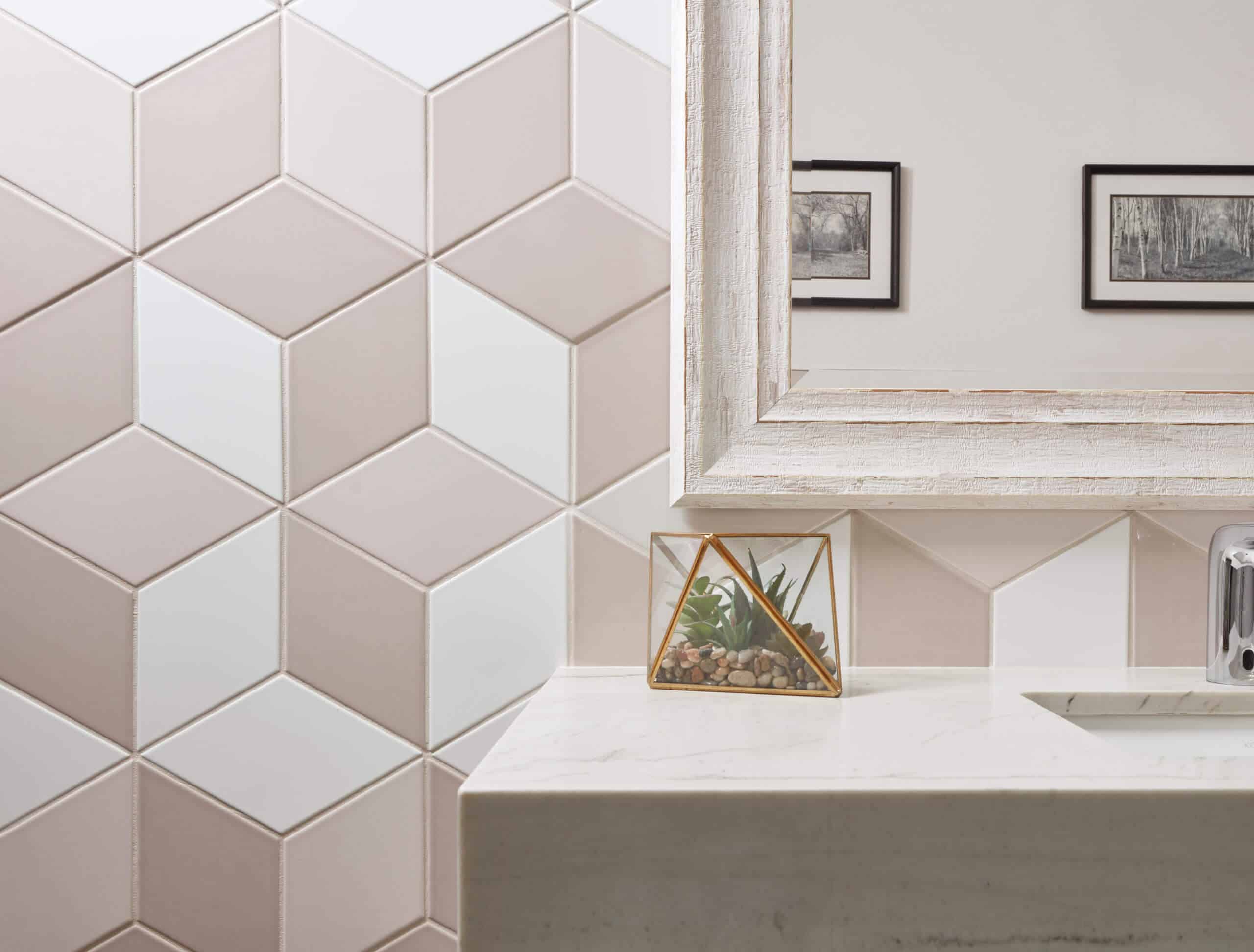Home / Resources / Product Information / Ceramic Tile
Ceramic Tile
Ceramic tile is affordable, easy to install, easy to maintain, and comes in a wide variety of colors, textures, and sizes so it’s a good option for many environments. Ceramic tile should not be used for exterior projects where the temperature drops below freezing because it doesn’t withstand fluctuation in temperature well; however, it is moisture resistant, which makes it ideal for a variety of commercial and residential installations, including interior walls such as backsplashes and as a wainscot, as well as fireplaces and shower walls.
PROCESSING CERAMIC TILE
Ceramic tile is made from a mix of clay and other natural materials such as sand, quartz and water which have been pressed under very high pressure into squares, rectangles, or even ovals. Ceramic tiles can be glazed or unglazed. Once the tile is completely dry and moisture has been removed, the ceramic tiles may be glazed to create a water resistant seal and add color and texture to the tile. To create color, pigment is added to the glaze which can be high-gloss or matte.
After the glaze is applied, the ceramic tile is then baked in a kiln to seal the color onto the clay. If the finished design will have many colors, then multiple rounds of glazing and firing take place to create the final pattern.
Ceramic tiles can be sold individually or mounted on mesh sheets (especially when cut small or arranged in a predefined pattern, like a mosaic).
GRADING CERAMIC TILE
CERAMIC VS. PORCELAIN TILE
Ceramic tile does not typically carry the color of the tile through the ‘body’, so if the tile is chipped, the flaw will be noticeable. Porcelain tiles have pigment baked all the way through the tile, known as color body porcelain, so a chip is less noticeable. Porcelain tiles have a water absorption rate of no more than .5 which makes them waterproof. Porcelain tiles can be installed unglazed and even be given non-slip surfaces for commercial applications. Ceramic tiles are softer and easier to cut, making them ideal for do-it-yourself projects. Porcelain tiles are much denser, so they are difficult to cut unless commercial grade cutting saws are used.
CHOOSING CERAMIC TILE & GROUT
Choosing ceramic tile for your project is largely determined by its use. Ceramic floor tiles are often square, ranging in size from 6″ x 6″ to 24″ x 24″. Using a larger tile in a small room can give the illusion that the room is bigger. Choosing small tiles will result in more grout lines which can make a room look busy, so small tiles are best for rooms that will not be cluttered with decoration or furniture.
Wall tiles can be square or rectangular and range from 4.5″ x 4.5″ to 8″ x 10″. Wall tiles are often glossier than floor tiles. Decorative edging including bullnose tile and listelles can be purchased in a variety of sizes to complement the main tile pieces.
Ceramic tiles are laid on the subsurface using setting materials. Grout is placed between the tiles to create an even, moisture-resistant surface.. Just like there are a wide variety of tile colors, there are also a wide variety of grout colors to choose from. You can purchase grout in a similar color to your tile so that there is less of a visual break on your surface, or you can choose a complementary or contrasting color to make a pattern stand out or to bring variety to your project.
USE OUR JUST IMAGINE DESIGN TOOL
You can use our Just Imagine Design Tool to visualize what our products will look like, when installed in a variety of settings. We can also help you choose the right size, shape and color of tile and grout for your residential or commercial project. Visit one of our local showrooms and bring along the following information:
- Type of room (bathroom, kitchen, hallway, showroom)
- Type of project you will tile (floor, walls, counter)
- Room or project dimensions
- Existing or new color scheme
Our very knowledgeable team members will help you pick out the ceramic tiles that will bring out the best in your home or business. It’s up to you to decide which option will look best with your kitchen or bathroom design, and your budget. Our friendly and knowledgeable sales team can help you decide which is the best option for you. Call or visit your local Arizona Tile showroom for a personal consultation. Or you can use our Just Imagine design tool to view your choices in your actual kitchen or in our sample kitchen.
Ceramic tiles are graded based on their intended use. Grades I, II, and III are for residential applications from very light (Grade I) to heavy foot traffic (Grade III). A Grade II tile would be more than adequate for a residential bathroom or wall application. Grades IV and V are designed for commercial ceramic tile applications where the floors will have to withstand a very heavy amount of foot traffic. Ask your Arizona Tile sales person about the environment in which your tile will be used.

